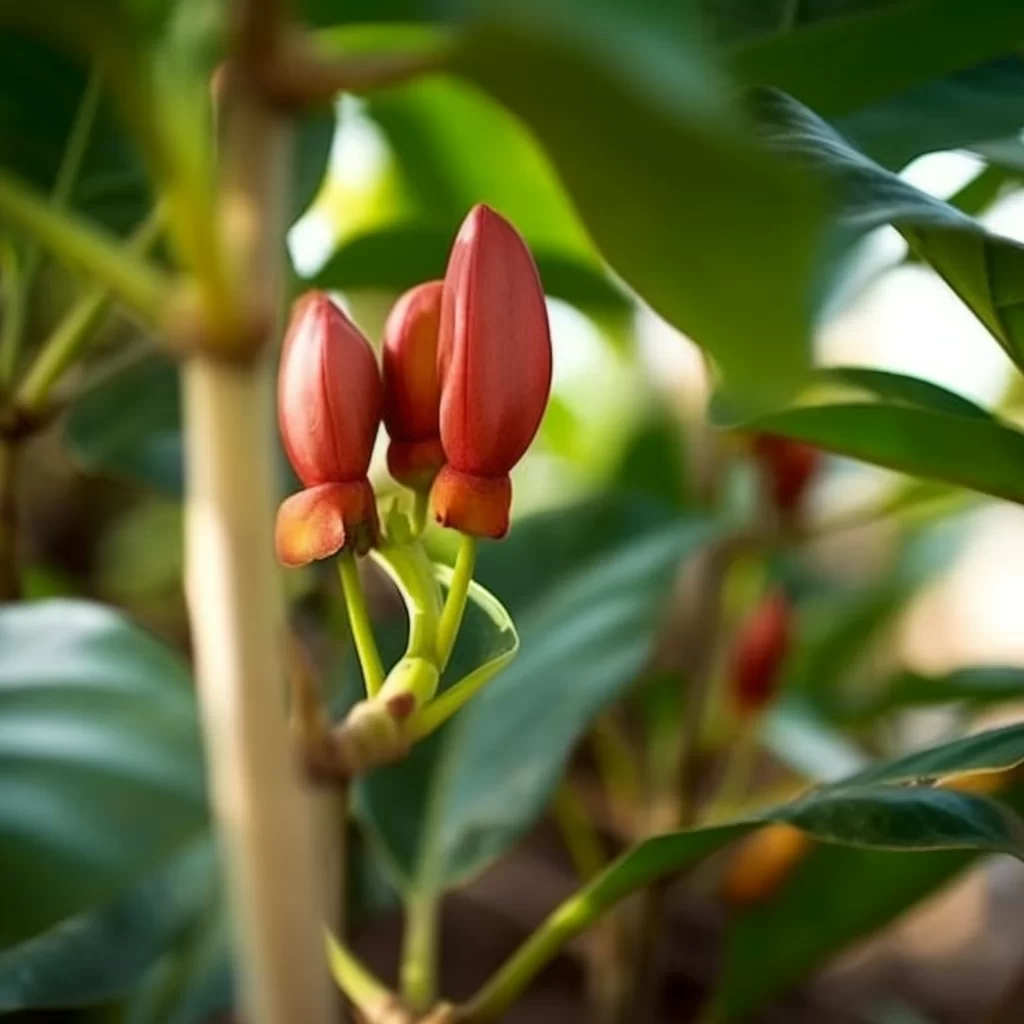Story of Day :
Contents
The Ultimate Guide to Ackee Plant: Care Tips and More
Are you looking for a tropical plant that’s not just beautiful, but also edible? Look no further than the ackee plant! This unique fruit-bearing tree is native to West Africa and has become popular in the Caribbean region as well.
In this guide, we’ll cover everything you need to know about growing and caring for your very own ackee plant.
What is an Ackee Plant?
The ackee tree (botanical name Blighia sapida) is a member of the soapberry family.
It produces bright red or yellow fruits that are pear-shaped and grow up to 4 inches long.
Inside each fruit are three large seeds surrounded by soft, creamy flesh that’s somewhat similar in texture to scrambled eggs.
- Ackee trees are typically small or medium-sized, reaching heights of 20-40 feet tall when fully matured.
- They have glossy green leaves that grow in clusters at the end of branches.
- Ackees produce seasonal white flowers primarily during late winter through early spring before fruiting begins around May/June depending on where they’re planted.
Growing Ackee Plants from Seed
If you’re interested in growing your own ackees from seed, here’s how:

- Select ripe fruits with fully opened seed capsules.
They should be fresh – ideally picked within two days – because their germination rate declines rapidly over time if not stored properly.
- Wash the fruits thoroughly and extract the seeds.
Be careful not to damage them!
- Soak the seeds in warm water for at least two days.
Change the water daily.
- After soaking, place each seed in a pot filled with fertile soil that drains well and is free of pathogens.
The pot should be about 6 inches deep.
- Add fertilizer to encourage growth – a balanced N-P-K ratio is ideal for this type of tree.
- Cover your pots with plastic wrap or a clear plastic bag to create humidity that will help germinate your seeds faster.
- Ackee plants need full sunlight and prefer temperatures between 70-85°F (21-29°C).
Keep them moist by watering regularly but avoid overwatering – soggy soil can lead to root rot!


Caring for Ackee Plants
If you’ve successfully grown an ackee plant from seed, congratulations! Now it’s time to keep it healthy and strong:
- Ackees thrive in tropical climates that offer plenty of sun, warmth, moisture, and humidity.
If you live outside such regions (i.e., USDA hardiness zones above Zone10), consider growing yours indoors or using methods like misting/spraying frequently so as not to dry out their leaves too much during winter months when heating systems tend run excessively dry air into homes especially if located near windows facing north which receive less natural light exposure than those facing south

- When caring for ackee plants:
- Water your plants often, aiming to keep the soil moist but not waterlogged.
- Fertilize your plants regularly, using a balanced N-P-K ratio.
- Prune your trees occasionally to remove dead or diseased branches.
- Keep an eye out for pests like scale insects and spider mites that can harm these trees.
The Danger of Eating Unripe Ackee Fruit
A final word of caution: while ackee fruit is delicious when ripe, it can be toxic if eaten unripe.
The fruit contains a natural toxin called hypoglycin A that can lead to serious illness or even death if ingested before it has fully ripened.
Therefore, harvesting home-grown ackees requires careful attention to detail and some knowledge about how to identify ripe fruits safely before consuming them.
In Conclusion
Ackee plants are both beautiful and fascinating, offering up delicious fruit that’s rich in valuable nutrients like protein and fiber.
With proper care and attention, you too can cultivate this unique tropical tree in your backyard or indoor space! So why wait? Start growing yours today!
